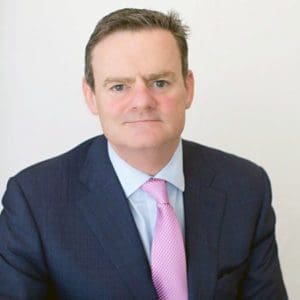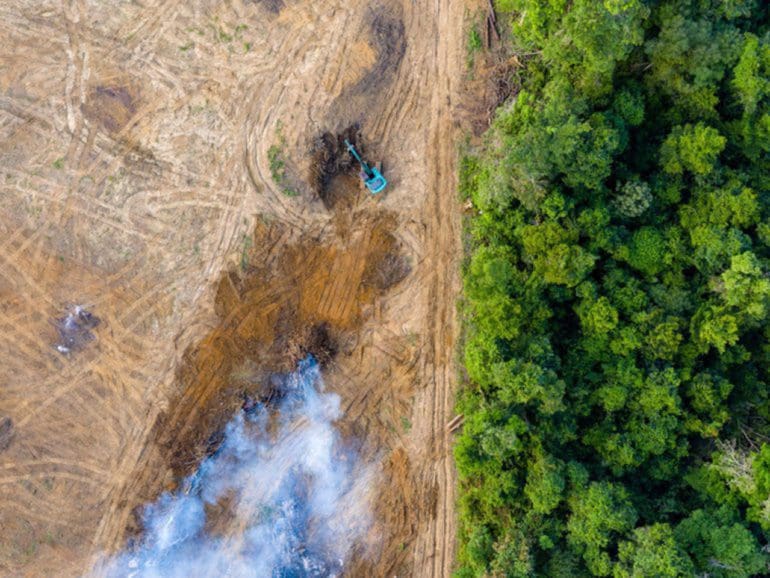While more than 80% of business executives worldwide are worried about climate change, they need assistance adapting their businesses to this new era and the opportunities.
Their banks can help them with this, OakNorth‘s president, Peter Grant, said, but they also need to thoroughly understand this new world along with the opportunities and challenges it brings.

They need to know how to quantify, report, and act on climate change-related risks and opportunities in their commercial loan portfolio.
OakNorth’s value proposition
Grant said OakNorth is well-suited for this new world moving forward because they already take a progressive, future-focused approach when assessing borrower risk.
The company itself was created after founders Rishi Khosla and Joel Perlman had difficulty getting a business loan in the United Kingdom.
The modeling looked at past financials instead of future business prospects. They instead went to New York and fared much better because their lender assessed them with much more progressive methods.
Grant explained that the trick is in breaking the American economy into many subsectors and taking a granular, forward look into the commercial loan book. OakNorth looks at 273 such sectors.
“It’s really the holy grail of commercial lending because it’s so difficult to get all the data,” Grant said. “So we went in the quest to get as many data points of SME companies but also drive time analysis, past spend and everything that’s going to affect that particular borrower coupled with a borrower’s financials.”
Combine that with additional components, and you can make an extremely informed lending decision with confidence that allows you to go into areas you might otherwise avoid, Grant said.
Bringing institutional approach to commercial lending
Two years ago, OakNorth began to sell that approach to other banks and created OakNorth Credit Intelligence.
“Our main differentiation really is in that forward look for the commercial loan book, and we define the commercial loan book is really a company that turned over $1 million to $100 million but also want to borrow probably $1 million to $100 million as well. That’s about 121,000 loans, which equates to about 60,000 borrowers. So it’s a really good spread across the US market.”
Grant said that amount of data allows OakNorth to see debt leverages and margins charged in various sectors that suggest perceived risk.
“The way that we’re able to do that is this granular approach that we have; that we learn from institutional lending that we’re bringing to commercial lending. But the most important thing is speed and being able to use machines to assist humans in making decisions. So our value prop is really lending smarter and faster, learning more by using technology, and doing it quicker to get a decision, an idea, the right decision for the borrower, and then ultimately learning more. And that’s so important right now because we’ve made the credit cycle has changed.”
Invests in data analysis
OakNorth invests heavily in data analysis and identifying potential new data sources, Grant said. They employ 150 credit scientists who specialize in each of those specific sectors.
Hospitality, for example, is broken into six unique areas. That granularity is particularly helpful when assessing the current state of a restaurant sector that saw a flurry of hiring in fast food but a slowdown in high-end dining.
“We have about 400 million alternate data sets of all historical company performance, but also we’re taking live streaming of point of sale data, we’re taking drive time analysis,” Grant explained.
“So if you want to open a fast-food restaurant in a certain area, we will look at what businesses complement that restaurant, what businesses compete, or how’s that going to affect cash flow and revenues. We do a forward cash flow forecast on revenues based on the data that we’re taking in.”
The beauty of the model is the banks want their competitors to participate, Grant said, due to the network effect of larger data sets. It brings more detailed regional results that humans use to make a faster decision.
With the last pandemic a century ago, the industry is working without an adequate precedent as they adjust to sudden, rapid change. As lenders conduct risk assessments, some engage in manual processes that lead to fragmentation. A risk officer struggles to get an accurate picture across an institution’s entire portfolio.
OakNorth can work with banks to get a comprehensive view in a fraction of the time, Grant said. Both would assign a risk rating to the same files. When differences occurred, those would be the borrowers the institution would first contact. That beats having to assign hundreds of people to the sole purpose of conducting annual reviews of thousands of separate loans.
How can banks and their clients address climate change?
As banks and their clients adjust to both the pressures and opportunities of a climate-focused economy, there is plenty of work at the outset, Grant said.
To provide an accurate rating, rating agencies need a detailed assessment of an institution’s borrowers across a list of considerations, including assets and green investments. OakNorth has been developing such a system for the past 18 months.
“We’ve got about 18 man-years of research with our credit science team and climate science in producing a framework and scaling for assessing a commercial loan with regards to climate risk,” Grant explained. “We take about 10 different data points, and we run different scenarios.”
Part of the preparations is to incorporate the goals generated from various regulatory pronouncements and international agreements such as the Paris Accords, Grant said, while adding double the amount of investment that went into the PPP program is now needed to reach the goals of the Paris Agreement.
Based on the reduced emissions from these recent lockdowns, we’d need several more like them to reach the Paris goals.
Tech drives opportunity
The way to achieve those aims is via technology, Grant said. Green technology is coming faster and heavier than many think, and with that comes opportunities. It’s a $2 trillion opportunity for the United States by 2030, while globally, by 2050, it’s $11.1 trillion.
“And what you don’t want is a central bank’s alternate lending sources stepping in, you want your local, your regional banks coming into the SMB market space,” Grant said. “So in the US, 30 million small to medium-sized companies are our target market for our customers, and they employ 98% of the US workforce.”
Consider a restaurant hamburger, Grant said. It takes 400 liters of water to get that patty to the table. Along the way, its path is affected by ranchers, abattoirs, butchers, truckers, cleaners, and the restaurant itself, each a business needing to adjust to a new world with its myriad of pressures from people eating less meat, environmentally conscious employees, and other stakeholders looking at factors from packaging to recycling.
“So what can the banks do?” Grant asked. “First of all, before, obviously, they go preaching to their borrowers, and everybody else is getting their own house in order with their own ESG. I think a lot of them are doing that already. But you have to make it habitual through the organization because it’s people, process, and then it’s technology.”
Grant said that banks need to see their loan exposure clearly in this age. Yes, regulations are coming, but it’s about more than that. It’s about growing loan books while also doing the right thing.
More lenders see that, and they’re participating in a consortium led by OakNorth to discuss how to assess the climate risk associated with loans, especially those that could be exchanged within a network of institutions, Grant said. That group has had several meetings and brought in subject experts to discuss sustainability, business development, and opportunities.
“If you look at this $11 trillion opportunity over the next 30 years globally, and the banks are going to be the main funding source for this, it makes sense for them to come together to agree on the frameworks, right?” Grant said. “And how they’re going to bridge this funding gap because commercially, it’s a good thing. But also, it’s the right thing to go back to that compassionate capitalism, their employees want to do it, and their stakeholders want them to do it. It’s your investors; it’s your board members; it’s your staff; it’s your customers and everybody else. They want to see transparency in your business model and who you’re funding.”


